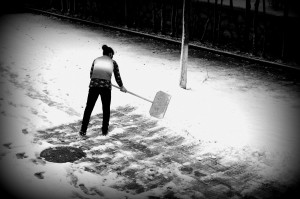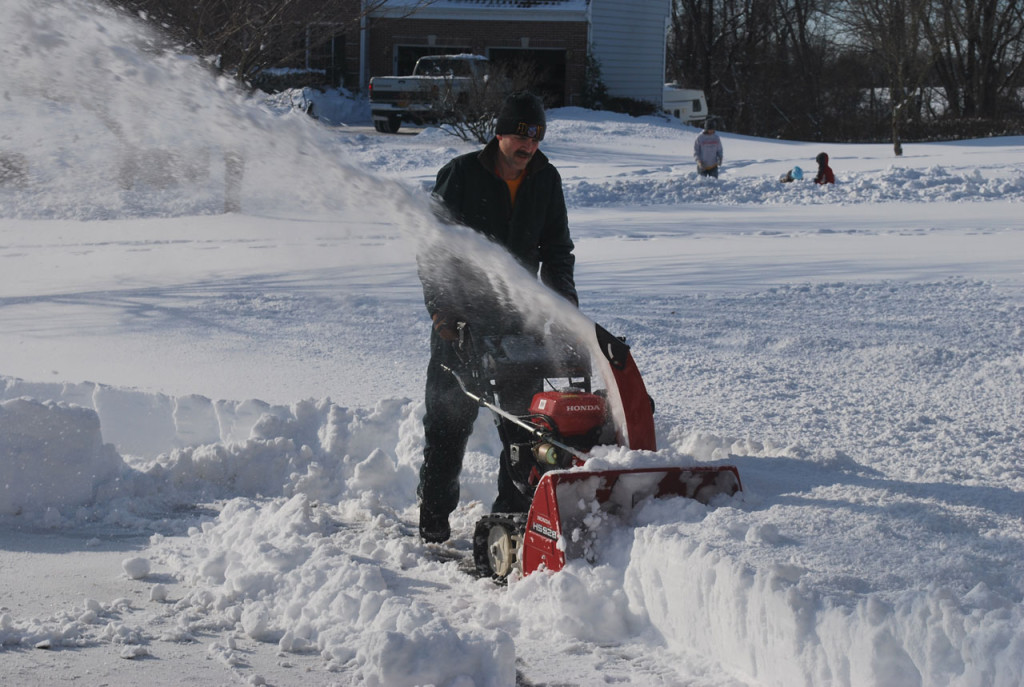 How many times have you been shoveling snow and either slipped on ice and hurt your back, injured your tailbone or even twisted your ankle. Too often we seem to throw on our winter coats, wrap up with scarfs, strap on our boots and take off into the big storm without properly preparing for the dangers involved with improper snow removal. Here are a few snow removal safety tips that might help you utilizing proper practices and prevent potential injury.
How many times have you been shoveling snow and either slipped on ice and hurt your back, injured your tailbone or even twisted your ankle. Too often we seem to throw on our winter coats, wrap up with scarfs, strap on our boots and take off into the big storm without properly preparing for the dangers involved with improper snow removal. Here are a few snow removal safety tips that might help you utilizing proper practices and prevent potential injury.
You are at a higher risk of getting hypothermia and frostbite if not dressed properly to accommodate for extreme cold conditions and at an even higher risk if you have reduced blood circulation. When exposed to prolonged cold temperature your body loses heat faster than it can produce it. The result of the body’s energy being depleted due to extreme cold exposure generally is hypothermia. Through it commonly takes place in cold temperatures, hypothermia is also known to occur in cool temperatures if someone is chilled by sweat, rain or submerged in cold water. It effects the brain due to low body temperature and enables you to think clearly or move properly. The most dangerous aspect to hypothermia is that the victim is not aware this is happening and will not have the ability to do anything about it.
Frostbite is an injury caused by exposure of parts of the body to cold freezing temperatures. Frostbite occurs most commonly on the fingers, toes, ears, cheeks, and chin. This can cause permanent damage to your skin and blood vessels which can result to amputation in some instances.

Adhere to equipment safety instruction and avoid accidental injuries with these snow and ice equipment notable safety tips. There may be quite a few potential hazards you are aware of and some you are not when it comes to snow and ice removal. To avoid these hazards always use the equipment in ratio to proper size and style to prevent overexertion. Remember to monitor your body’s warning signs while shoveling and handling snow equipment to prevent any health incidents. Avoid slippery icy surfaces while handling any type of equipment. Most importantly, for your own personal safety always inspect your equipment before every use.
Proper snow removal techniques start with taking a couple of minutes to stretch by loosening your back, neck, shoulders, arm and leg muscles. Shoveling is a strenuous activity especially if the snow is wet and heavy. Begin by lifting small amounts while breathing into each lift and out while throwing. Hold the shovel close to your body and keep your feet shoulders width apart for better balance.
The idea method for proper snow removal is to shovel precipitation in layers as it falls to prevent heavy piles and limit ice buildups. Try to begin as soon as possible after snow falls. Don’t forget to start out slow and take breaks often to prevent overtiring.
What seems to work best for most homeowners is to use poles, stakes or flags to mark off their driveway and walkways before the storm hits in order to better track their landscape dimensions.
We all want to ensure our family, friends and guest stay safe while visiting us on any occasion.
In lieu of dealing with the physical safety risk and potential equipment dangers of creating a safe environment for you and your visiting company, contact the Designscapes Colorado Team to handle your winter needs at info@designscapes.org.
